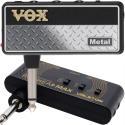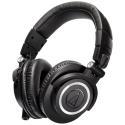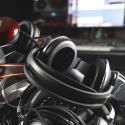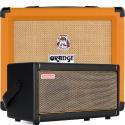Connecting Your Amp to Headphones: The Complete Guide
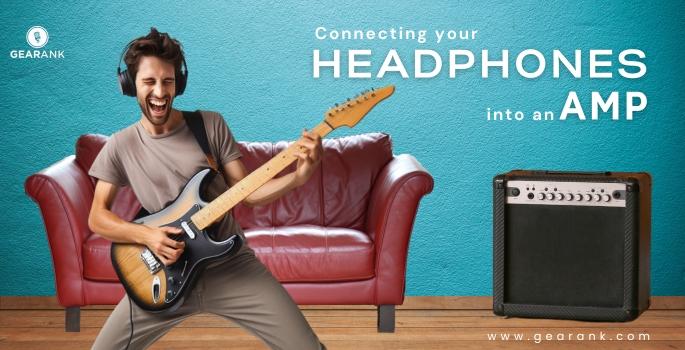
Amp to headphones connections seem simple enough, but there are things to consider if you want great tone.
Some amps simply aren't meant for headphone use. Even though they come with headphone output, they don't have tone-enhancing features like speaker cabinet emulation.
Thankfully, most modern amps now have tone enhancements that allow for inspiring tones through headphones.
In this article, I'll show how you can play electric guitar with headphones while getting good amp-to-speaker cab sound quality.
We'll talk about:
-
Equipment To Play Electric Guitar Silently
-
Methods on How To Connect Headphones Into Amp
-
Pros and Cons of each method
-
Tips
By the end, you'll learn how to listen to your playing through headphones with amp-like tones.
Equipment To Play Guitar Silently Through an Amp
Aside from your instrument, here are the basic equipment you'll need:
-
Amplifier with Headphones Out and Cabinet Modeling
-
Headphones
-
3.55 mm and/or 6.35 mm guitar cable
-
3.55 mm or 6.35 mm adapter
Amp to Headphones Connection

The main reason to play through headphones is to avoid disturbing other people. But you have to do it without compromising tone.
With a proper amp and a good pair of headphones, headphones-to-amp connections will provide great sound quality.
Many modern amplifiers have 3.5 mm or 6.35 mm headphone jacks. You'll see them on amps with either a phone or headphone label.
Before plugging in, it is best to lower the master volume of the amp, so you don't get surprised by loud sounds through your headphones. This applies to solid state amps or tube amps, bass guitar amps, keyboard amps, as well as acoustic guitar amps.
Look for the appropriate headphones out jack, then plug your headphones. Do not plug your headphones into the power amp output jack or the amp's speaker output, this may damage your equipment. This is especially important when using an expensive tube amp, you don't want to damage your precious equipment.
If your amp lacks headphones output, you'll need a different amp for quiet playing.
Once plugged in, you gradually raise the volume to your preferred level. Be careful not to set the volume at overly loud levels as it may damage your headphones or, worse, hurt your ears.
Older amps with no "Cab Sim" feature may end up sounding thin when paired with headphones. But those with built-in speaker cabinet emulation will have a more natural sound, especially useful when listening through headphones.
-
Pros: Since it is a direct output from the amplifier, this method provides a sound that mostly represents the amp's tone.
-
Cons: The quality may depend on the amp's built-in headphone circuit, which might not always deliver the highest fidelity. It may not provide the nuanced sound you hear when playing through speakers.
Alternative Ways to Play Silently
If your amp does not have a headphones output, there are other ways to play silently. I'll go through the most common ones below:
1. Plug Headphones Into An External Guitar Headphone Amplifier:
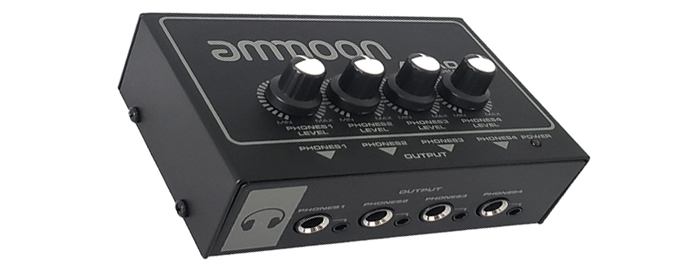
As one of the best guitar headphone amps, they are especially beneficial for matching with high-impedance headphones. These types of headphones produce high-quality sound, but they often require higher power output.
This is where an external amplifier like a headphone amplifier can help, as it amplifies the audio signal high enough to drive high-impedance headphones.
With an external headphone amp, you can hear the full output of your headphones. Some headphone amplifiers also have the option of multiple headphone outputs in case you want someone else monitoring your sound.
-
Pros: External headphone amplifiers are designed specifically to drive headphones. It offers more power and often better audio quality compared to built-in headphone jacks.
Audiophiles, musicians, and people who demand high-quality audio reproduction frequently use them.
-
Cons: Another extra gear to setup and worry about. Quality varies among headphone amplifiers.
2. Plug Headphones Into A Load Box Attenuator
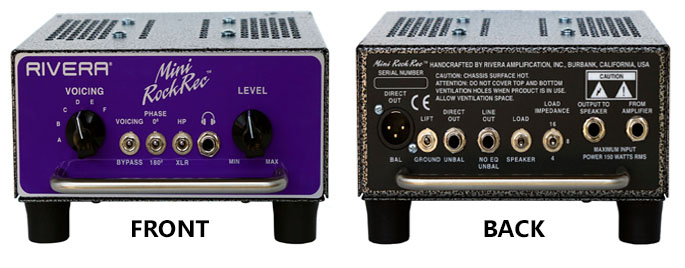
A load box's primary function is to create a dummy load or impedance. It gives guitar amps a speaker-level input and a line-level output.
This is crucial when connecting to live mixing consoles or recording devices, USB audio interface, as well as an effects device.
-
Pros: It allows you to use an amplifier without a speaker cabinet. Often used for silent recording and can be used for direct monitoring.
Furthermore, these devices give an authentic analog sound and great-sounding guitar tones, just like straight out of an amp.
-
Cons: This method may result in a direct dry tone that may not appeal to some guitarists. The sound may need to be processed further for headphone use.
3. Plug Headphones Into Amp Modelers or Multi-Effects Pedals:
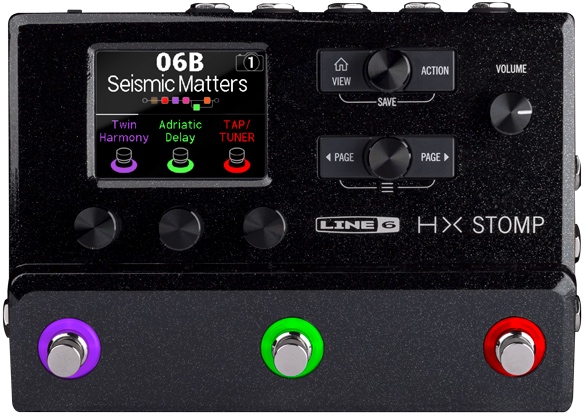
Amp modelers or multi-effects pedals provide tone-shaping to the guitar's dry signal. They inject amp-like tones into your sound, and you can often select from a wide range of different amp tones.
Most modern amp modeling or multi-effects processors have a digital to analog converter and a dedicated headphone output complete with cabinet simulation for realistic sounding tones.
-
Pros: A good multi-effects pedal can emulate the sound of various amplifiers and effects. Providing you with a variety of guitar amp sound options. This method is the most efficient and practical, but you're technically not plugged into an amp.
-
Cons: The quality can vary, but high-end modelers can provide impressive headphone sound. The sound is dependent on the quality of the modeling algorithms.
Tips
Connecting headphones to an amplifier is a straightforward process, but here are some tips to ensure you do it correctly and get the best experience:
-
Use the Right Output: If your amp has multiple outputs, ensure you are using the correct one for headphones. It might be labeled as phone / headphone. Sometimes, you'll only see a headphone symbol like this 🎧. Ensure that you connect your headphones to the correct jack. The same diligence should be applied as you connect your guitar to your amp.
-
Choose the Right Cable: Use a cable with the correct connectors. Many headphones and amplifiers use a 1/4-inch (6.35mm) stereo jack, but some may use a different size. Ensure the cable matches both the amp's headphone input and output jack.
-
Power Off the Amp: Before connecting or disconnecting headphones, it's a good practice to turn off the amplifier. Set the volume on the amp to a low level, then gradually increase it to your desired listening level. This helps prevent any sudden loud noise or potential damage to your ears and headphones.
-
Check Impedance Matching: Ensure that the impedance of your headphones is the right match for the headphone jack of your amplifier or audio device. Impedance mismatches can affect sound quality and damage your equipment. This is also the reason why you can't directly connect headphones into a guitar.
-
Bluetooth Headphones: Instead of using wired headphones, you can also connect Bluetooth headphones to your electric guitar amp. However, Bluetooth headphones usually have latency issues. This can be off-putting for electric guitar playing.
-
Read the User Manual: Always refer to the user manual for both your amplifier and headphones. It may contain specific instructions or recommendations for headphone use. Go through the electric guitar headphones FAQ, especially when you're unfamiliar with the specs of your gear.
Final Thoughts
Amp to headphones connection can help you play guitar discreetly while getting the amp-like sound quality you desire.
This is a great option for playing electric guitar quietly, especially when practicing and recording in places where you have to you can not disturb the people around you.
Remember to check where you are plugging your headphones into, never plug them into a speaker jack. And ensure impedance compatibility to get the best results.
Frequently Asked Questions
Can I Damage My Headphones by Pluging Into An Amplifier?
Generally, no. However, plugging into an amplifier that provides too much power can be damaging. More particularly on sensitive headphones.
Always check the specifications of both the headphones and the amplifier to ensure compatibility.
What is Impedance?
Impedance is the measure of electrical flow resistance. High impedance means more electrical resistance, which requires high power. While low impedance has less resistance.
High-impedance headphones have more coil windings, which means more sound details and better quality. But this also means higher output requirements.
Matching impedance is important if you want to make the most out of your headphones and for keeping your equipment safe.
What are Ports, Jacks, Plugs, and Connectors?
Ports, jacks, and plugs are all considered types of "connectors." Ports are the general term for the female connectors in a device.
They are usually used interchangeably, but "ports" refer to the connectors in TVs, computers, etc. For example, a USB port, an Ethernet port, or a VGA port. On the other hand, "jacks" are types of ports that are used when referring to audio.
Plugs refer to the male connectors of a device. For example, an audio plug, electrical plugs, etc.
Contributors:
- Jerome Arcon - Co-writer
- Jerry Borillo - Illustrator



